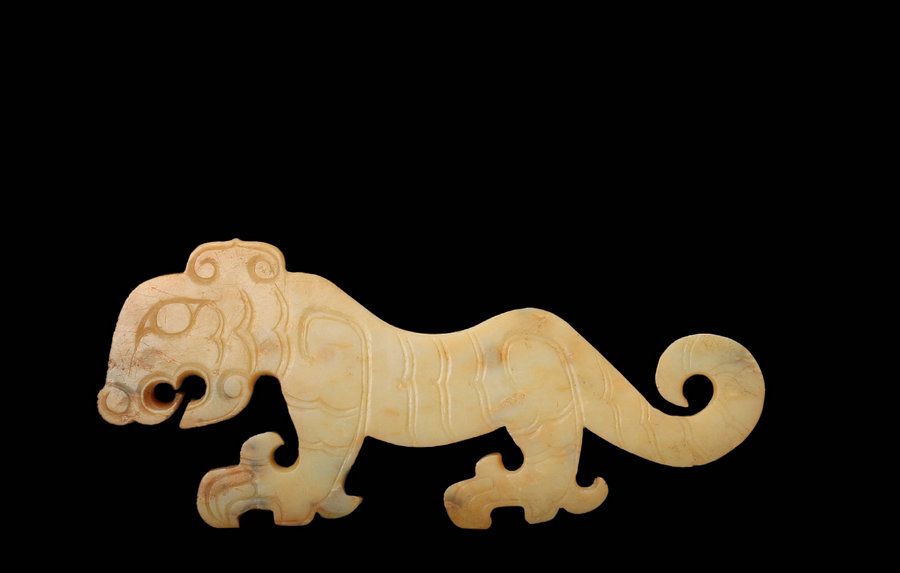

During construction work in 1968, the grand burial chamber of a Han Dynasty vassal king named Liu Sheng was discovered in Mancheng county, Hebei province, 700 kilometers from the Guo state burial ground. Magnificent pieces of jade were brought to light, including a disc topped by a pair of back-facing dragons, which is now on display in Nanjing Museum.
Yet standing head and shoulders above them all is a jade shroud composed of more than 2,400 rectangular jade pieces sewn together with gold thread. The shroud covered the body of the deceased from head to toe and included a disc that once covered the crown of the man's head.
While the outfit was expected to keep the man's body intact, the hole in the middle of the disc provided an exit so that his soul could make its heavenward journey.
Throughout his life, Liu Sheng lived in the shadow of his young brother Liu Che, handpicked by their father to be the seventh emperor of the Han Dynasty. Liu Che, also known as Emperor Wudi, proved himself a forceful ruler and visionary leader. Around 139 BC he sent out a mission to explore the vast terrain to the west of his territory, a daring effort that eventually gave rise to the creation of the ancient Silk Road, named after its most famous commodity.
For the first time, Hotan jade, found along the rivers or deep in the Kunlun Mountains in what is today Xinjiang Uygur autonomous region, revealed its existence to people who had never failed to allow themselves to be captivated by jade's soft luster.